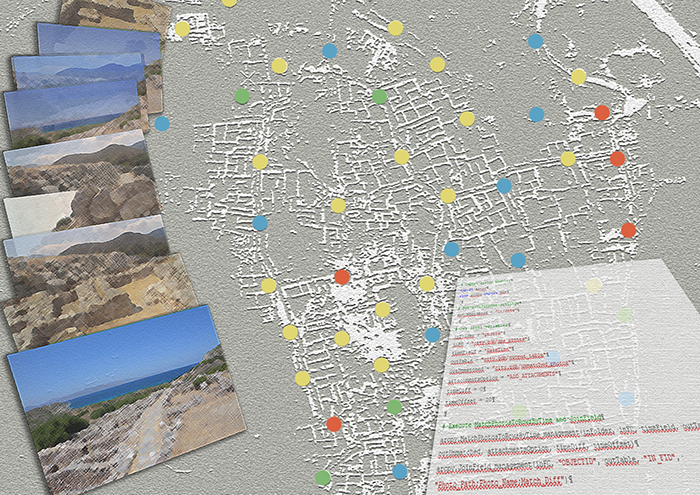2. Background and Method
2.1.1 What is Spatial Image Analytics?
Image analysis refers to any process of obtaining meaningful information from images and image analytics refer to processes involving the application of digital techniques for the same purpose. Humans are very well equipped to extract meaning from individual images and perform sophisticated analysis of small datasets but not adept at processing a large number of records. Computation, on the other hand, can handle large amounts of data to identify new correlations and interpretations for various disciplines and applications.
In this context, different techniques are continuously applied and developed to meet the requirements of cultural heritage as well as other arts and humanities disciplines. A substantial amount of work is focusing on data mining, remote sensing, and other image geospatial applications, on image processing for recording heritage and visual pattern or stylistic recognition, and influence in art and heritage collections. Other studies are more concerned with improving the spatial, temporal and visual classification of image datasets to enable searchability and further analyses. This workshop is concerned with the spatial properties of image collections and the methods that efficiently addressing questions about the 'where' of such humanities data. Such questions may wish to explore, for example, places of historical graphic material production and patterns of distribution, spatial patterns of cultural change as well as public perception and participation in understanding, safeguarding and disseminating cultural heritage artefacts and sites. This type of analysis uses directly geolocation metadata embedded in the image files rather than features within digital pictures (image processing).
This workshop is concerned with the spatial properties of image collections and the methods that efficiently addressing questions about the 'where' of such humanities data. Such questions may wish to explore, for example, places of historical graphic material production and patterns of distribution, spatial patterns of cultural change as well as public perception and participation in understanding, safeguarding and disseminating cultural heritage artefacts and sites. This type of analysis uses directly geolocation metadata embedded in the image files rather than features within digital pictures (image processing).
Then the term 'analytics' indicates that this type of image data inquiries is primarily quantitative. In essence, regardless of the particular software or programming approach employed each time, the analysis involves some spatial statistics applied to large scale image datasets. Today arts and humanities researchers and practitioners can use different software to perform this analysis also depending on the type of investigation and the visual output affordances. For instance, ImagePlot, a free software developed by the Software Studies Initiative for Humanities research, affords to plot, visualise and discover different patterns in image collections and other media by exploring either image properties or file metadata.
In the following section, you are going to learn how to perform a particular type of analysis which explores spatial patterns of incident data. The 'incidents,' in this case, will be the locations of images recorded by visitors in the second scenario of Unit I (see section Batch Image Geotagging).

